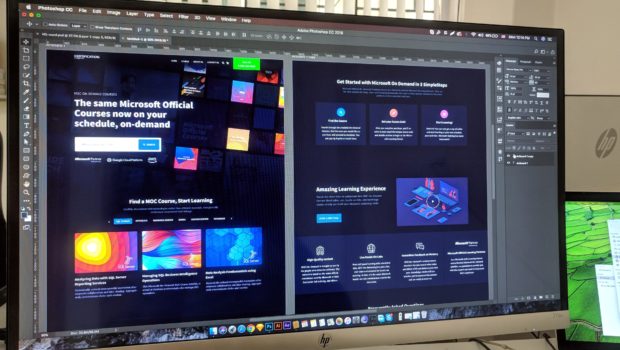7 Benefits of Having a Responsive Web Design
Believe it or not, Responsive Web Design came in existence only in the year 2010. An independent developer named Ethan Marcotte coined the term and went on to write a whole book about it.
Now, I’m not saying that your website cannot survive without a responsive design, but the fact is that it really can’t. RWD has gone from being a web trend to standard practice in less than a decade.
As technology advances, the definition of a smart device is being updated every day. What started with mobile phones can now be seen with a screen on your wrist. So, whether you choose to implement it today or not, the future shall irrevocably call for a paradigm shift in your design capabilities.
After all, the benefits are far-reaching than the efforts. The pros are so apparent that some web designers consider it a part-and-parcel of their work now. Here are a few advantages to help you understand the true impact of this change.
Extended Reach Towards Mobile and Tablet Audiences
Nearly half of all web traffic in 2020 came from mobile devices. This goes on to prove that mobile is not the future but, our present reality. A responsive design ensures that these visitors are well taken care of.
Adapting itself to different screen sizes, it provides a seamless experience to all users, irrelevant of the base environment. Optimized for clear viewing, RWD works off your UX capabilities to boost traffic and increase brand awareness throughout the spectrum.
Low Development and Maintenance Costs
Responsive Web Design is structured upon a single HTML code. The same code is sent to a laptop as well as a smartphone. The client device selects the parts it requires and displays your UI effectively. Doing this saves you from building multiple codes and websites for different devices, reducing your overall costs.
Additionally, with all the forms of your web pages cumulated within a single codebase, maintenance becomes an easy task. Whether it be an SEO update or a bug, it can be done from a single standpoint.
Faster Loading Speeds
Success in business depends a lot upon how accessible the brand is in the digital world. It is relatively simple to frustrate a prospect with slow loading. In a survey, one of four users said that they would bounce off the site if it the loading takes more than 4 seconds. Given how constricted that timeframe is, your website needs to be visible in the blink of a second.
Responsive web design takes far less time to load, thanks to the fluid grid structures. The larger images and multimedia are also compressed to match the device performance. Fast site speed gives the users more time to explore your products and primes them for better conversions.
Improvement for SEO
In 2015, Google announced that mobile-friendliness would be a deciding factor for SERP. The crux behind this move was providing a unified experience to its users through a clean layout. Earlier, multiple sites had to be created for desktop and mobile devices, opening you up to content duplication penalties. Plus, a different SEO strategy needed to be applied to both the websites, adding to the costs and efforts dramatically.
With a responsive web design, all your optimization can be focussed on one URL. It further helps with link building as all the desktop backlinks are maintained in the responsive versions. As you may know, the bounce rate is one of the most crucial factors that decide a site’s authority on the internet. A responsive design allows you to display the relevant content to your users, giving them value on all devices. Furthermore, the visitors tend to share a single URL that makes your site rank higher on the search engines.
Better Conversion Rates
Conversion rates are nothing but, prospects completing their journey from a landing page to the purchase. When built upon UX’s concept, a responsive web design brings the same aesthetics and flow from your desktop to mobile devices. This helps give your visitors enhanced visibility into your products and services.
Once the user finds your content engaging, the chances of purchase increase, and so does your conversion rate. An RWD approach decimates any roadblocks that might hinder the content association, turning your visitors into solid leads.
Consistent UX Model
Users are more often than not shuffling between different devices. What starts as casual surfing on your laptop can lead to an engagement when continued on the smartphone. To keep the experience curve consistent, responsive websites maintain their aesthetic across all devices.
It allows the visitor to travel between different environments without losing track of what they were looking at. A continuous UX brings greater consumer satisfaction and builds credibility for your business.
Consolidated Analytics
A single web URL means you don’t have to run around accumulating data from different sources to track the user metrics. A responsive site acts as a one-stop-solution to gather all the reports from multiple devices with applications like Google Analytics.
Simplified into a single set, you can better understand your page performance, conversions, funnels, and bounce rates. A comparative study can also be undertaken between the desktop and mobile users, all from a unified dashboard. This saves you time and money while painting a clear picture for your analysis.
It’s Time for a Redesign
Considering all the benefits mentioned above, it is obvious that RWD is no longer a choice. After all, who doesn’t love a rising consumer demand and better SEO rankings?
If you’re wondering where to start then, the first thing you could do is test out your website’s responsiveness. Depending upon the results, plan a redesign with your developer, taking into account the aspects that are indispensable and the ones that can be ticked off. Put all your design elements, content pieces and grid blocks through scrutiny to devise a UX that holds true to the desktop site while also harnessing the potential of a mobile platform.
If you’re thinking of a complete overhaul, don’t forget to include other web design trends that can keep you a step ahead in the game.
Photo by Eftakher Alam on Unsplash











![The Future of Football [Infographic]](https://technofaq.org/wp-content/uploads/2016/12/Technology-And-The-Future-Of-Football-Final-Mid-Resolution-150x150.jpg)




